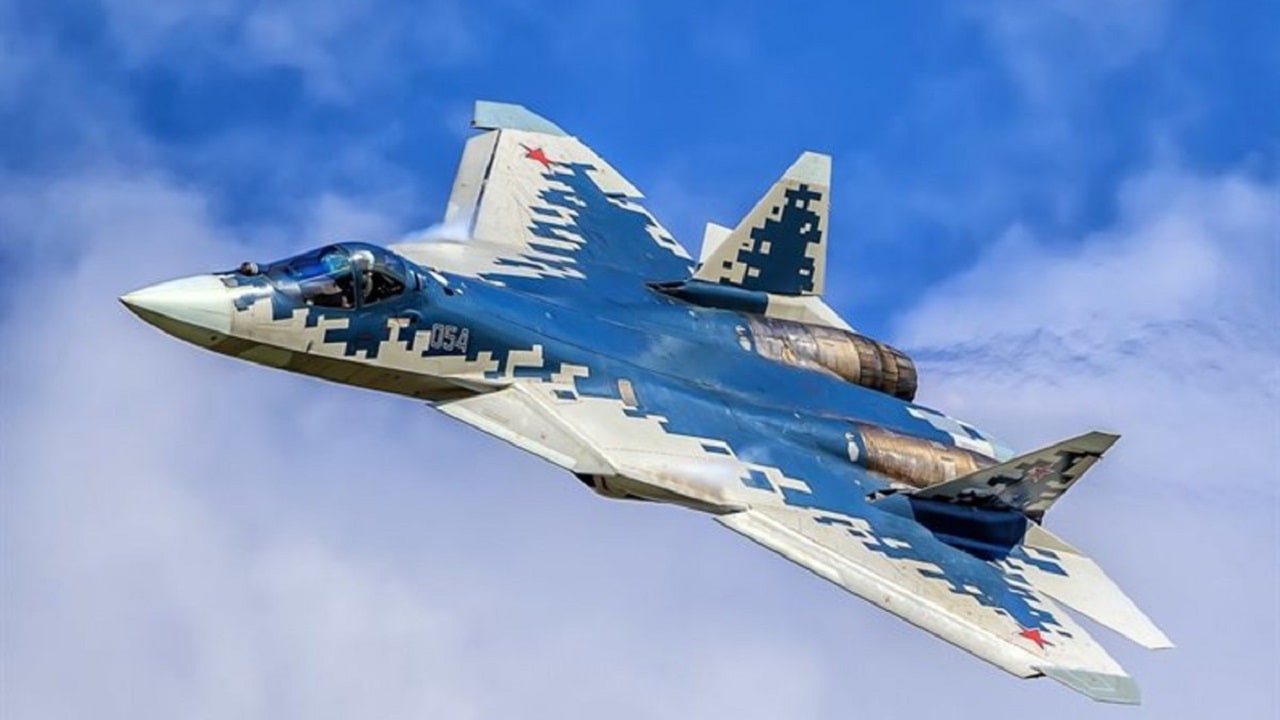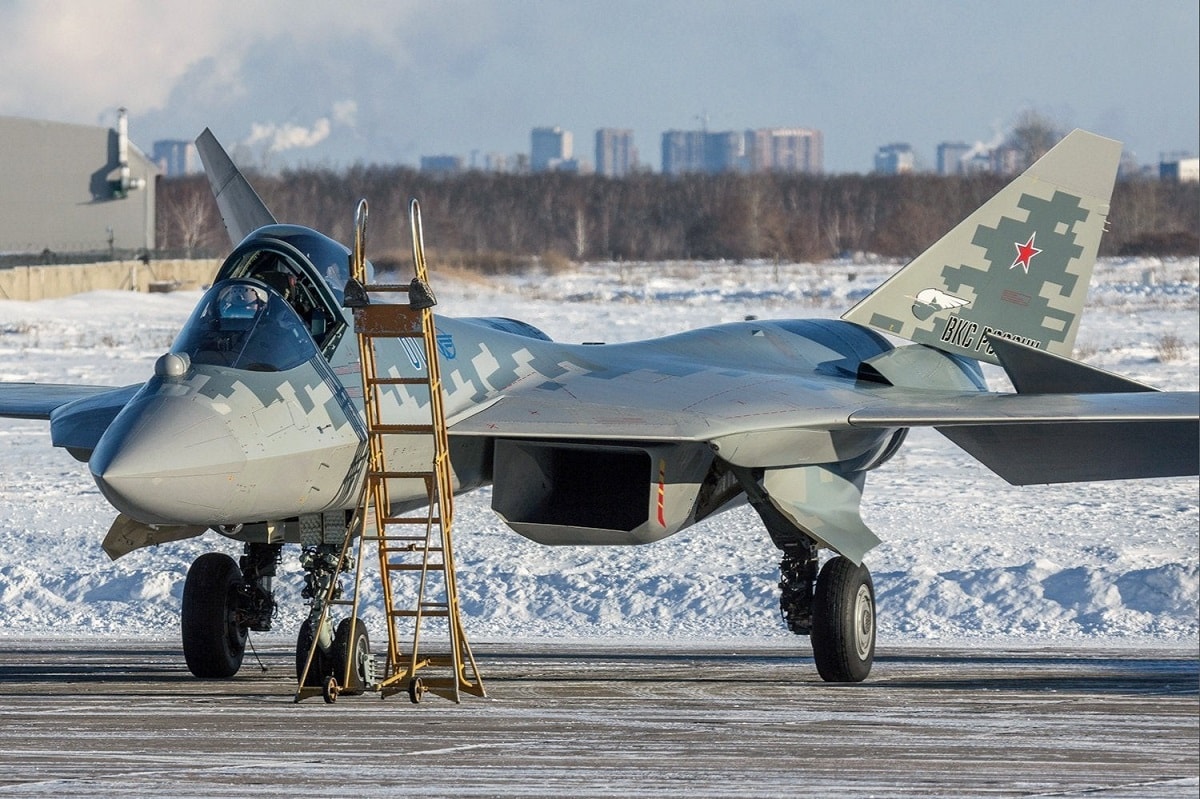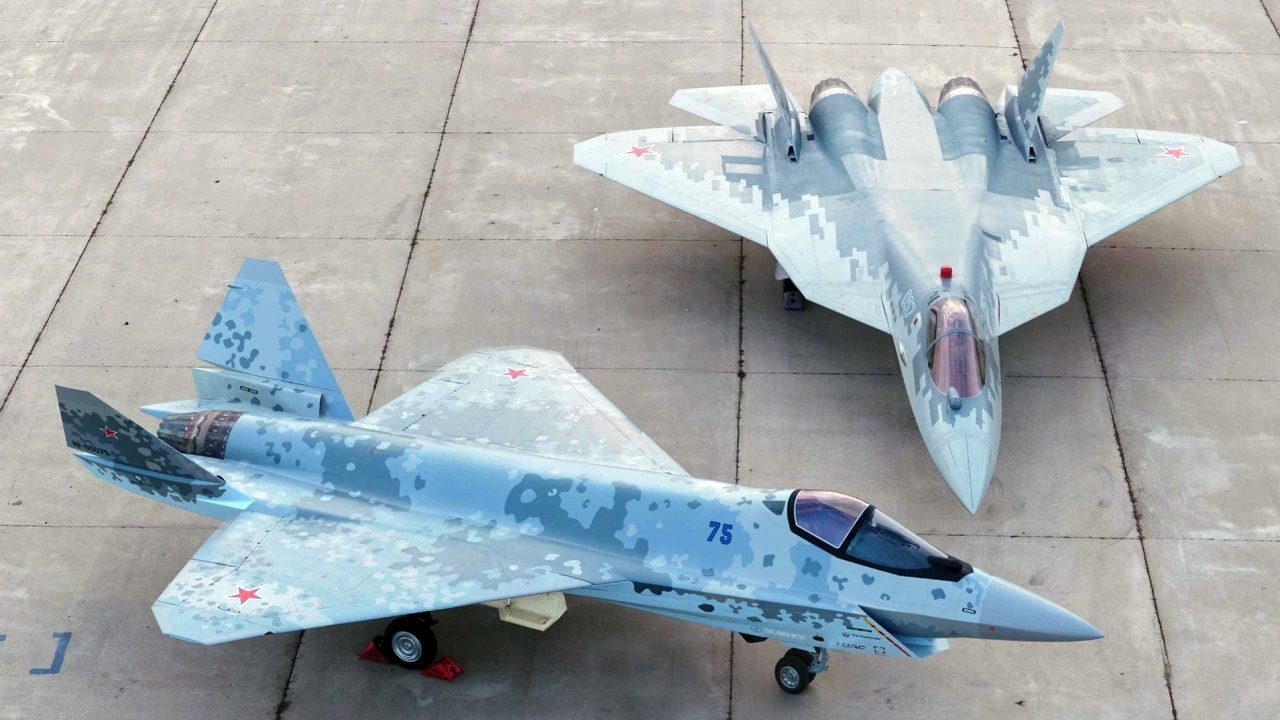What You Need to Know: Russia’s Su-57 Felon, its much-touted fifth-generation fighter jet, faces a challenging future.
-Despite its advanced design, the Su-57 suffers from reliance on Western components blocked by sanctions, outdated manufacturing capabilities, and slow production rates.
-Once seen as a potential global export success, the aircraft has failed to attract foreign buyers, with India withdrawing from its development program in 2018.
-Russia’s financial struggles and a shrinking arms export market further compound the jet’s issues.
-While the Su-57 was meant to replace aging MiG and Sukhoi fleets, its limited production and economic constraints leave its future uncertain.
Russia’s Su-57 Fighter Jet: Why Its Future Looks Grim
Ever since the fall of the USSR, the military aviation community has been waiting for the next-generation Russian fighter jet to emerge.
For more than a decade, the backbone of Moscow’s fighter force was the Mikoyan MiG-29 and Sukhoi Su-27, so what Russia would come up with next was the question.
During the Cold War years, the Mikoyan Design Bureau labored on a new-generation design heavily cloaked in secrecy.
This program was later revealed to be the Project 1.44/1.42 design (also known as the Multi-Role Fighter or “MFI” in its Russian acronym), which turned out to be too large, too heavy, not stealthy enough and designed more for the previous decade than for the 21st century.
The single prototype flew twice in 1999, and the program was canceled.
At the same time, Mikoyan’s main rival in the fighter business, Sukhoi, had been developing an aircraft under the Perspective Aviation Complex – Front-Line Aviation (or “PAK-FA” in the Russian acronym) program.
The prototypes were initially known by the design bureau internal designator of T-50.
That T-50 design was awarded a contract in 2002 with the team at Sukhoi, set ordered to develop, as one Moscow colleague described it, “an aircraft larger than a MiG-29, but smaller than a Su-27 and would eventually replace both those types in service.”
Su-57 Felon: What Gives the Program Bleak Prospects
Following the selection of the Sukhoi design, the first flight of the aircraft occurred in 2010 from the aerodrome at the Komsomolsk-na-Amure aviation plant in the Russian Far East.
It would take another decade until the current production version of the aircraft (now designated Su-57) entered service with the Russian Aerospace Forces in 2020.
These timescales are one of the reasons the program will probably never be built in large numbers. The window of opportunity that the Russian industry once had to produce and sell this aircraft to export customers has passed.
The original plan of Russian industry was that any nation that had already acquired the Su-27, Su-30SM, or Su-35 would be a captive market for the sale of the Su-57.
But many of those target nations are now procuring other western-made aircraft that are more reliable and easier to maintain in most respects.
India once partnered with Russia to develop a specialized version to meet their requirements but withdrew entirely from the partnership in 2018.

Su-57 stealth fighter. Image Credit: Wikicommons.
As many commentators have pointed out, the chief maintenance issue with the Su-57 is that it relies heavily on imported Western components.
These are parts required both for production and for maintaining the aircraft daily. They are also unobtainable due to sanctions imposed on Russia over its February 2022 invasion of Ukraine that bars their importation.
Su-57 Fighter: What Holds the Warplane Back?
Russian aircraft programs also depend on export orders to create economies of scale or are challenging to support correctly.
Unfortunately, not only are there not any external buyers for the Su-57, but Russia’s arms exports are shrinking rapidly – along with that downturn in those arms sales, Russia’s influence in foreign affairs globally is dropping.
Speaking with numerous Russian industry leaders at various international defense expos in the past two decades, a collection of their comments paints a picture of why there is not much of a future for the Su-57 Felon:
-New-age aircraft designs require the development of lighter-than-metal alloys and non-ferrous materials – usually composites. The Russian aerospace industry is far behind in this technology, mirroring a deficit in composite production capabilities across the whole economy.

Su-57 Felon Fighter. Image Credit: Creative Commons.
-The Su-57 is supposed to be equipped with an AESA radar set, the NIIP N036 “Belka,” and a new NPO Saturn/Lyulka AL-51F 5th-generation jet engine developed at the aero-engine enterprise in Ufa. Neither system has been ready for installation in the initial batches of aircraft. The AL-51F engine was only mature enough to be shown publicly for the first time at Air Show China in Zhuhai in November 2024.
-Aircraft production is painstakingly slow and is produced at a single-digit per-year rate. If there is to be a wholesale replacement of the older MiGs and Sukhois with Su-57s, a massive investment in manufacturing and test facilities would have to be made to facilitate series production.
Su-57 Seems Destined to Fail
The latest economic data also shows Russia’s situation is worsening daily.
The head of Russia’s major defense industrial conglomerate, Rostec GD Sergei Chemezov, has said publicly at the end of 2024 that the current high interest rates mean “we will go bankrupt in a short period of time and will again come to the government with an outstretched hand and say, give us money to save our production,” he said.

Su-57 Felon. Image Credit: Creative Commons.
With the many demands on Russia’s central budget to finance the war in Ukraine, it is doubtful that kind of money would be forthcoming.
About the Author: Reuben F. Johnson
Reuben F. Johnson is a survivor of the February 2022 Russian invasion of Ukraine and is now an Expert on Foreign Military Affairs with the Fundacja im. Kazimierza Pułaskiego in Warsaw and has been a consultant to the Pentagon, several NATO governments and the Australian government in the fields of defence technology and weapon systems design. Over the past 30 years he has resided in and reported from Russia, Ukraine, Poland, Brazil, the People’s Republic of China and Australia.

